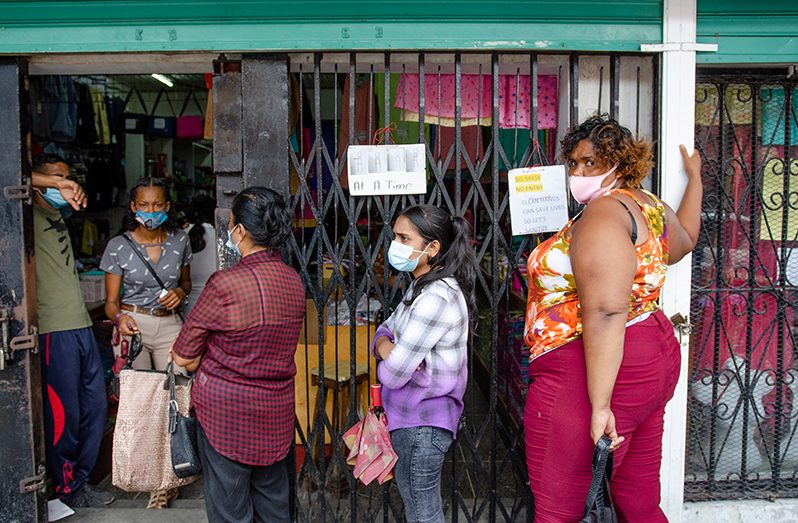By Vishani Ragobeer
WITH a large number of positive cases of the novel coronavirus (COVID-19) recorded in young persons aged 20 to 34, Minister of Health, Dr. Frank Anthony, noted that there are concerns about how active these persons are.
According to statistics provided to the Sunday Chronicle, the highest number of COVID-19 infections has so far been recorded among the younger populations, that is, the 20 to 24, 25 to 29, and the 30 to 34 age groups.
“We’re seeing younger people who are the ones who are more active, and we’re seeing more people in that age category being infected,” Dr. Anthony told the Sunday Chronicle during an exclusive interview.
He added: “They’re active, they’re going out there and they seem to be infected.”
A majority of the younger folks infected do not have the severe form of the coronavirus and more often than not, are asymptomatic (that is, infected with the virus but not showing any symptoms). In very few cases, according to the Minister, younger persons are hospitalised. According to the record of deaths this newspaper has seen, there have been six deaths in this 20 to 34 category. Guyana has recorded 119 deaths so far.
The World Health Organisation (WHO) and the Centre for Disease Control and Prevention both indicated that older folks and later, older folks with pre-existing, underlying health conditions were more vulnerable to contracting COVID-19 and becoming severely ill.
Younger folks are more likely to be asymptomatic. Despite that, the younger population has to be responsible and reduce their activity and engagements with other persons, Dr. Anthony lamented. These mobile, younger persons might be “carriers”- spreading the disease to older folks.
In a recent interview with this newspaper, Head of Medical Services at the Georgetown Public Hospital Corporation (GPHC), Dr. Mahendra Carpen, reasoned that there may be a sense of “false security” among the younger population because the vulnerability of older folks has been well-ventilated. Outgoing Chief Medical Officer (CMO), Dr. Shamdeo Persaud, also told this newspaper that this age group may feel the strongest, and would probably be taking fewer precautions than the average person, again, because they believe they are less vulnerable. This, Dr. Persaud said, places them at a higher risk.
Both of these doctors also indicated that the high number of cases recorded in this younger demographic may point to underlying and undetected pre-conditions for chronic Non-Communicable Diseases (NCDs) such as diabetes and cardiac diseases. This may mean that the infected persons have comorbidities; comorbidity is a term used to describe more than one disease or condition present in a person at the same time.
RETROSPECTIVE STUDY
The Health Minister, however, indicated that studies would have to be conducted to determine whether there is a prevalence of the pre-conditions among this demographic.
“That’s something we’ll probably have to sift through the cases and to see, maybe with a retrospective study, because we know who were the persons who were infected so we can go back and look at the cases and see whether they had any underlying diseases and that way you can safely say whether they had other comorbidities,” Dr. Anthony said.
Currently, this data is not being collected because the younger persons affected by COVID-19 will not be hospitalised- given that they are asymptomatic or have mild symptoms. Since they are not hospitalised, a profile replete with their medical history is not taken.
But, he did not rule out the possibility of these underlying comorbidities. Dr. Anthony related that the International Diabetic Association has estimated that Guyana has about 60,000 diabetic persons but said that there are not that many cases on record.
“Therefore, one can assume if we don’t have so many on record, and so many patients enrolled in our facilities then we are either not capturing the patients who should’ve been diagnosed… and there may be persons who are diabetic but who may be ignoring the signs and symptoms,” he said.
This, the Health Minister said, presents an opportunity for the health sector to engage in more screening for the diabetics, and also other NCDs.




.jpg)









